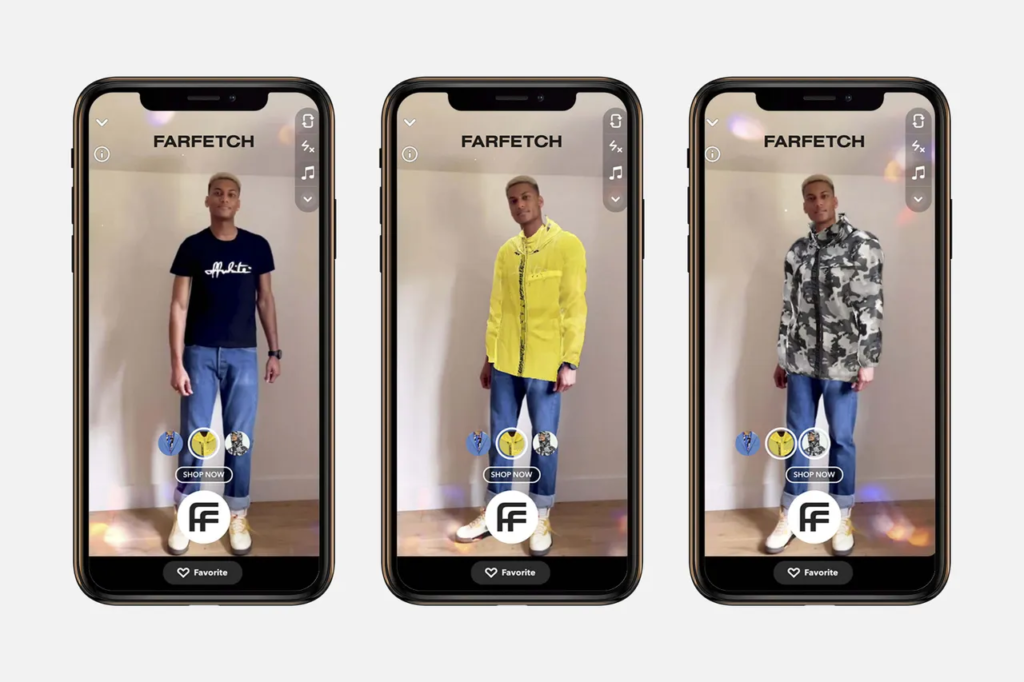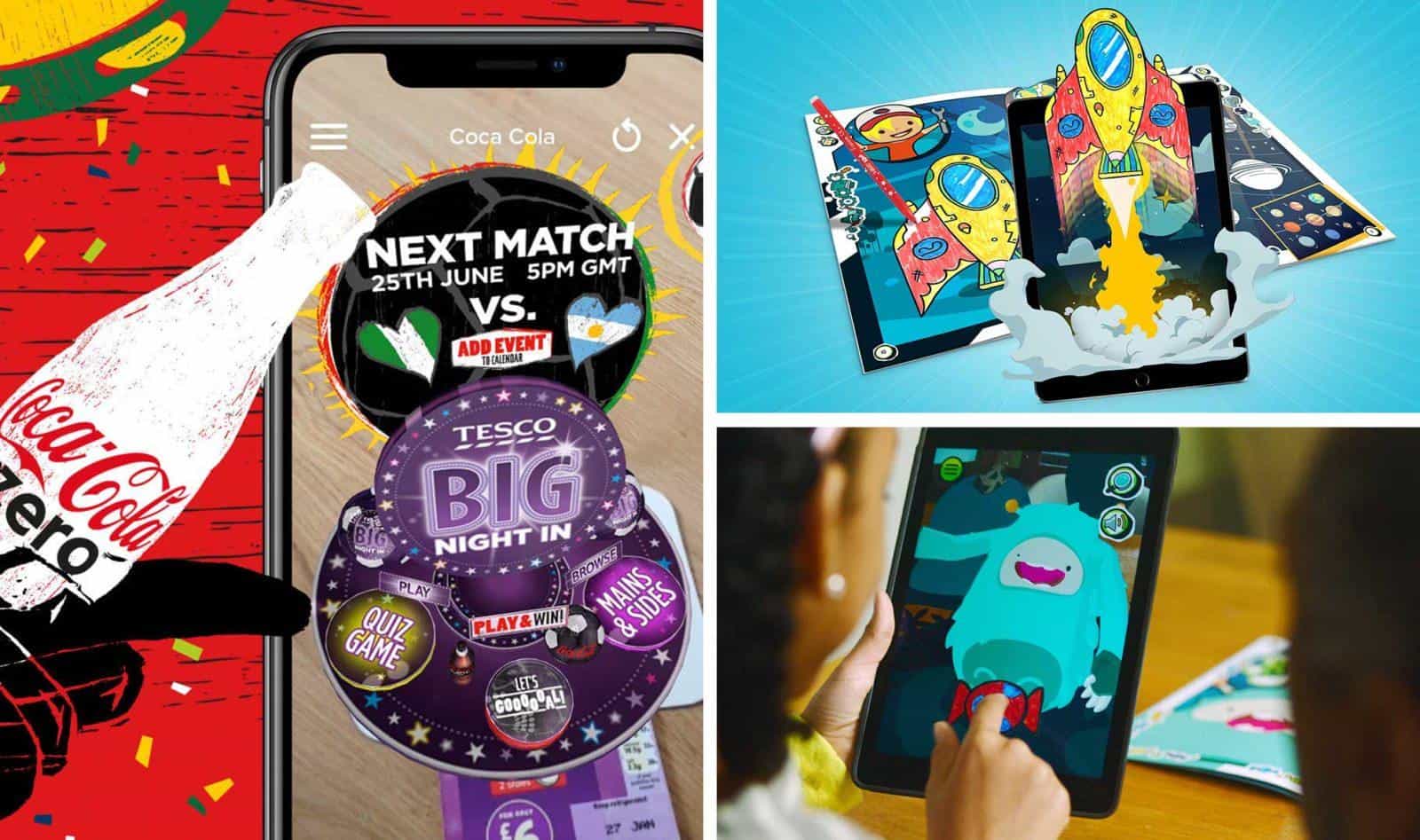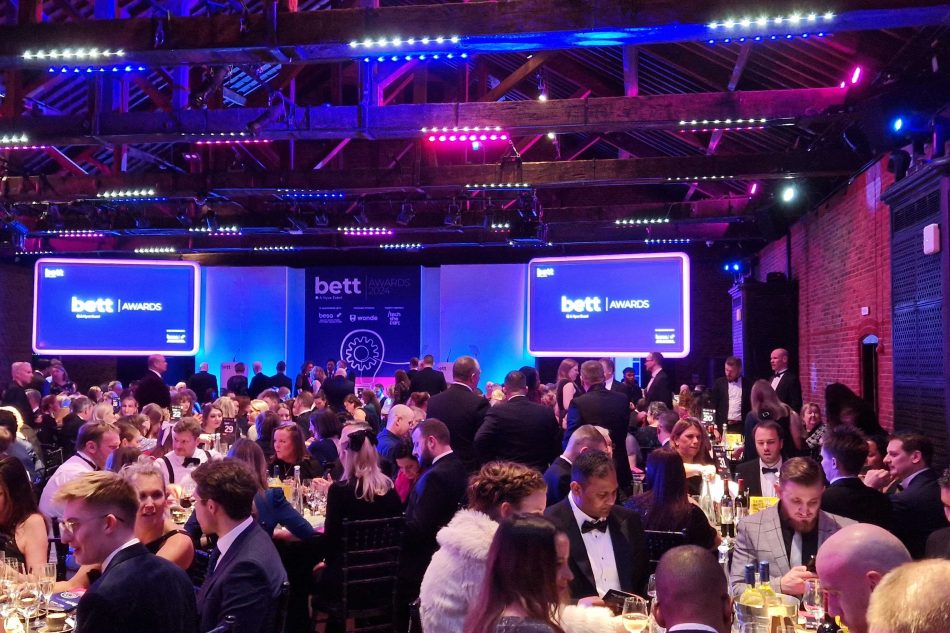
Augmented Reality Advertising: How It Works & The Best Campaigns
The augmented reality advertising space is increasing – It’s predicted that 2024 will see Global active users of AR technology reach 1.73 billion by the end of the year. With more consumers shifting their habits to online than ever before, it is not difficult to believe that AR advertising popularity is continuing to take over.
As part of their annual consumer trend report, Zenith UK highlighted the opportunity for growth that augmented reality advertising has for 2021. They predict that the Global ad spend on augmented reality will continue to grow, increasing more than 30% each year until 2023.
With augmented reality no longer being considered an emerging technology, Zenith estimated that 72% of UK adults now believe AR technology to be “fun and engaging” and encouraged brands to seek to adopt augmented reality advertising into their marketing strategies to meet consumer trends and demands. It was not too long ago when AR adverting and marketing was considered a gimmick, but now it serves a purpose by providing unique and memorable experiences, simplifying processes, and building relationships.
Although augmented reality has the potential to serve a true purpose, it still needs to be carefully planned and considered. Just like with any marketing venture AR advertising needs to provide value to both you and your target audience, it also needs to fit your brand identity and allow for the growth of the business.
With all this in mind, let’s take a deeper look into augmented reality advertising and how its growth is going to impact markets globally.
Here’s what we cover in this article:
What is AR advertising?
Augmented reality (AR) advertising is a form of digital marketing that uses AR technology to create interactive and engaging consumer experiences. AR technology superimposes digital elements, such as images, animations, information, and sound, onto the real-world environment through a device (such as a smartphone), creating a blended reality.
In AR advertising, businesses can use this technology to showcase their products or services in a more interactive and memorable way. For example, a clothing brand could create an AR experience where customers can try on clothes virtually before purchasing.
AR advertising can be delivered through various platforms, including mobile apps, social media filters, and digital signage, making it accessible to a broad audience. With AR advertising, businesses can leverage the power of immersive technology to create unique and memorable experiences for their customers.
In augmented reality advertising, users typically interact with the brand or product through a mobile device or wearable technology, such as smartphones or smart glasses. By utilising AR technology, advertisers can create immersive and interactive experiences that engage and captivate their target audience.
Here are some of the most common types of augmented reality advertising:
Virtual try-ons
Most common in retail or eCommerce, virtual try-ons essentially offer virtual fitting rooms or try-on experiences for their customers, allowing them to see what certain products would look like. From clothing and accessories to make-up and cosmetics, more and more retailers are using this type of AR advertising.
One of the biggest players in the AR game, Snapchat, collaborated with brands such as Farfetch and Prada to introduce virtual try-ons. In the case of Farfetch, a user simply had to stand in front of their camera and say “Show me a yellow jacket”, the software would then look for the most relevant item from their catalogue and place a virtual version on the user.

Product demonstrations
Another type of augmented reality advertising is product demonstrations. AR can be used to showcase product features, functionality, or special effects that are not easily conveyed through traditional advertising methods. Users can experience and interact with virtual models or animations that demonstrate the product’s benefits.
One of the main benefits of this type of AR advertising is that users can experience this anywhere, at any time. Check out the 3D printer below in our 3D viewer, then click the AR button to demo it in your own space.
Gamified experiences
another type of augmented reality advertising is gamified experiences. Many brands have created interactive augmented reality games that incorporate their products, services, or experiences in some way. This type of AR advertising adds allows users to connect and engage with brands in whilst enjoying an entertaining immersive experience.
A great example of this is when Walmart partnered with Stranger Things tp promote the release of their new season. Here is how the game was described:
Welcome to the Upside Down! In celebration of Stranger Things Season 4, Netflix has brought Hawkins and its dark underworld to life in AR. The experience takes users on a Demogorgon defeating mission. Triggered from inside Walmart stores, the campaign turned shopping aisles into hidden caves and vine-filled forests, encouraging users to visit stores and seek out the games on offer.
Interactive print ads
Augmented reality advertising can even be used to enhance more traditional methods of advertising. Print advertisements can be transformed into immersive experiences through the integration of digital content. By scanning the print ad with a mobile device, users are transported into a world where static images come alive with videos, animations, and interactive elements. This interactive layer adds depth and engagement to traditional print media, enabling users to delve deeper into the brand story, explore product details, or participate in interactive games.
Engine Creative was one of the early adopters of AR advertising and one of our earliest projects involved bringing The Ting Tings album cover to life, check it out in the video below.
So going back to the question, what is augmented reality advertising? There is no straightforward answer, AR advertising can come in many different applications and experiences, it is important for brands to understand that their solution must be applicable to them, it needs to have a strategic goal and a way of measuring this goal that provides genuine value.
The advantages of augmented reality advertising
Augmented reality advertising creates a memorable experience for the consumer. Zenith’s report stated that user experiences that include AR are 70% more memorable than experiences that do not. Augmented reality allows advertising to be an interactive experience between the brand and consumer, where the user is an active participant in the advertising they are exposed to.
These memorable experiences created by AR marketing can help to build brand awareness and spread through word of mouth. Not to mention that AR advertising experiences are extremely sharable online, check out this example from Pepsi nearly a decade ago below which went viral for its uniqueness and interactiveness:
Research company Neuro-Insight conducted the first UK-based study into the relationship between augmented reality and its neurological effects on the consumer. By using brain imaging technology on the 151 participants, they were able to track the brain’s response to the different stimuli the participants were exposed to.
They found that consumer experiences that included AR resulted in almost double the amount of engagement compared to non-AR experiences. In addition, they reported that AR also produces high-attention levels from its users.
CEO of Neuro-Insight UK Heather Andrew explained:
“We’ve researched brain response to many different media, and this study has shown that AR delivers exceptionally high attention levels – 45% higher than the average we see for TV viewing or general online browsing.”
These findings were recently supported by Shopify which claimed a 94% increased conversion rate for products that featured AR or 3D content. An immersive experience for the consumer enables a brand to build a stronger connection with its audience, allowing consumers to form positive associations with brands with that they have better engagement. This immersive relationship helps to increase brand profiles and ultimately boost sales. To find out more, read our post: 21 Augmented Reality Facts & Stats.

Augmented reality advertising and marketing campaigns, not only connect with audiences better but allow them to become more involved with brands, creating experiences that are more interactive, compelling and engaging
The challenges that AR presents in advertising
As technology develops and time moves forward, previous barriers have been overcome, yet new ones present themselves. For example, AR used to be considered a novelty, a fun and engaging way to attract users. Whilst the fun and engaging aspects have remained, there is a true purpose for AR marketing now.
Despite this, there is still limited adoption, and despite its growth, AR technology is not adopted by the wider population. However, thanks to advancements in web-based AR, and devices becoming more powerful, the technology is more accessible than ever before, and consumers are becoming more attuned to using AR.. Some are taking advantage of this, including the band Gorillaz, who recently turned the world into their stage using augmented reality to market their new song and album. The band hosted live AR concerts in London and New York which drew huge crowds to experience the one-time-only events. Check it out:
Cost and technology have been perceived as another big obstacle hindering augmented reality’s success in the advertising space. This was reported by a 2019 Unity study of 1000 participants from advertising and marketing fields, where 24.6% highlighted technology and 39.1% stated cost were the biggest issues preventing augmented reality in advertising from becoming mainstream.
But this perception is perhaps altering given how much the world has changed over recent years, spurring our reliance on all things digital. As our social interactions have reduced due to the Covid-19 pandemic, brands have used modern methods to connect with their audiences.
Using traditional media methods for advertising purposes is no longer the norm, with WARC claiming the following:
“2020 was the worst year on record for traditional advertising media.”
As technology has developed, costs have been reduced meaning augmented reality can be a cost-effective marketing tool. With support, technical challenges can be overcome, allowing brands to achieve a memorable and engaging augmented reality advertising campaign.
Our favourite top 4 AR advertising campaigns
In this section, we dive deep into the realm of augmented reality marketing campaigns, exploring a range of inspiring examples that showcase the transformative power of this cutting-edge technology. These 4 brands have used augmented reality marketing campaigns to engage audiences and stand out from the crowd, each approach is unique and displays the diversity on offer when it comes to utilising augmented reality technologies.
Here are 4 of our favourite augmented reality marketing campaigns:
1. EE 5G Web AR Experience Featuring Rita Ora
In 2020 EE was the most notable brand to launch an immersive AR-based advertising campaign to highlight their 5G service and demonstrate the capabilities of Apple’s iPhone 12 Pro. The web-based AR experience gave users a performance from Rita Ora (as an avatar) and her latest single in their own homes. After the performance had ended users were shown a button saying “Discover the Power of 5G” which took them to the EE website.
2. Vaseline 150 Years of Healing
In 2020, the familiar household brand Vaseline marked its 150th birthday and wanted a celebratory augmented reality marketing campaign to top it off. By scanning a limited edition Vaseline tin users could take a trip through 150 years of history as well as play the 101 Random uses for Vaseline game.
3. McQueen Gin World’s Coolest Labels
McQueen Gin wanted to expand on its adventurous brand and gin-drinking experience with the launch of what they call, the “World’s Coolest Labels”. After downloading the McQueen app, users can scan the label on the bottle and watch the bottle come to life with a vibrant full-length animation showcasing the depth and flavour behind the drink. The immersive AR advertising campaui experience also gives customers the chance to learn more about the distillery through the lemon cartoon character that reflects their alternative approach to gin in the market.
4. Burger King Burn That Ad
2019 saw the iconic Burger King ‘Burn That Ad’ campaign by David SP. Using competitor adverts as a marker, users of the Burger King app in Brazil were able to aim their smartphones and burn their competitor’s ads using augmented reality. As the flames died down, users were shown a screen inviting them to indulge in a free Whopper at their nearest Burger King. Using augmented reality advertising to destroy non-AR marketing, nice.
The future of AR in advertising & marketing
In a consumer insights release, Google recently claimed the following:
“Brands that adopt AR tools can help people make more informed and confident decisions, building brand trust and forming lasting connections with audiences eager to discover them.”
Augmented reality advertising will continue to be utilised by brands who are looking to forge immersive relationships with their audiences.
The future will see augmented reality become a mainstream advertising tactic for brands, allowing consumers to become active participants in advertising campaigns that they find attention-grabbing, engaging and memorable. This will ultimately increase brand awareness, provoke a higher conversion rate for their products and promote an uplift in sales.
Bring your brand to life with AR advertising
We help brands create augmented and virtual experiences through our very own augmented reality platform solution, REYDAR. Whether you are looking to build an advertising campaign, a virtual event, a gaming experience or a virtual tour, contact us to talk about your plans.
Talk to us about your Augmented Reality Advertising requirements

